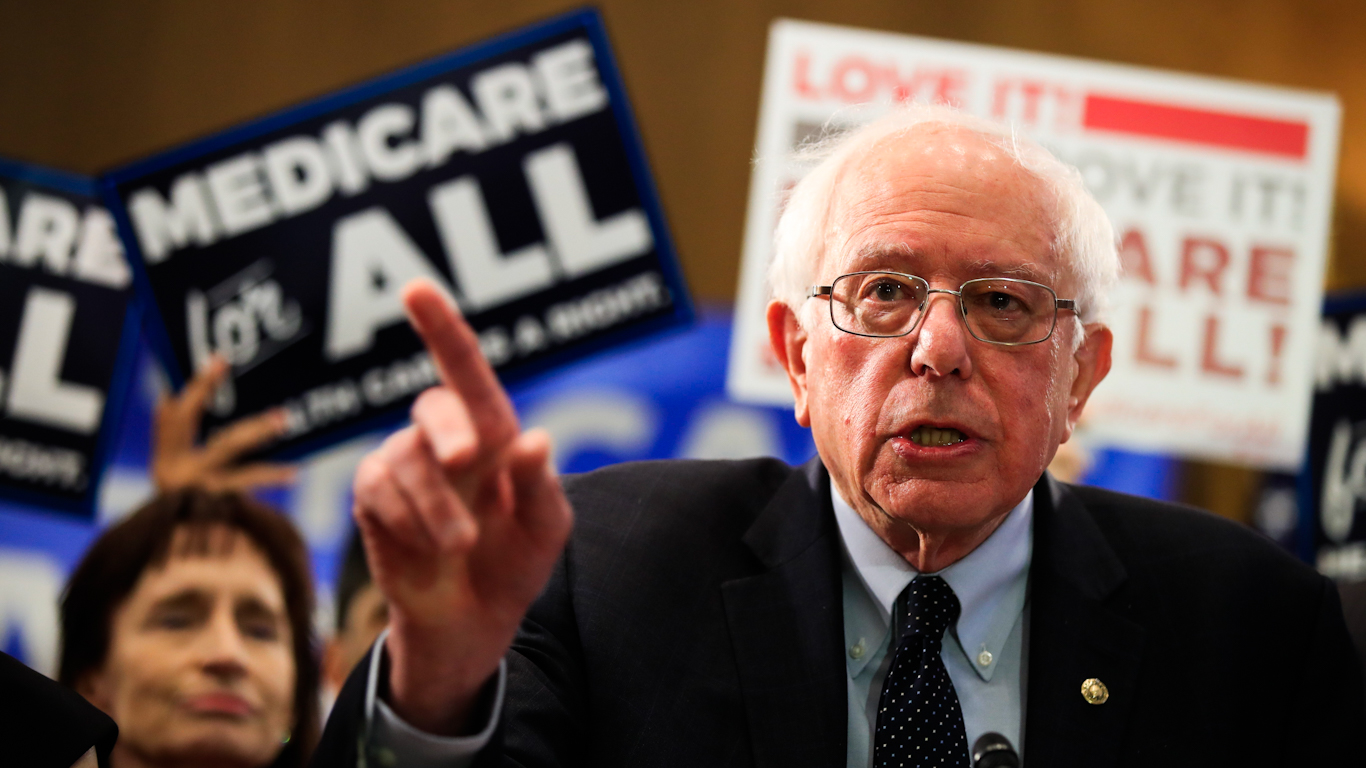91 percent of all peer-reviewed scientific articles find that a single payer healthcare system like Medicare for All would save the country money, according to a meta analysis released Wednesday.
The study, published in the influential open access journal PLOS Medicine, is a systematic review of 22 single payer plans from 18 studies, published between 1991 and 2018, including 8 national cases and 14 state-level plans. It found that 20 analyses (91 percent) predicted savings over a few years, and 19 (86 percent) projected there to be immediate overall savings in year one.
The team, headed by lead author Christopher Cai of the University of California, San Francisco School of Medicine, concluded that: “In this systematic review, we found a high degree of analytic consensus for the fiscal feasibility of a single-payer approach in the US.”
The authors found that studies funded by organizations across the political spectrum agreed that there were huge savings to be made by switching to a single payer system; with a median estimate of a 3.5 percent reduction in total costs in the first year alone. One area where the studies predicted gigantic savings was in healthcare administration, with estimates varying from 1.2 to 16.4 percent of total costs (with a median of 8.8 percent). Many studies also highlighted a reduction in fraud and waste that could amount to as much as five percent of all healthcare costs being eliminated.
AOC confronts and grills Gilead CEO over HIV drug price tag pic.twitter.com/RSOzJbnhz8
— The Independent (@Independent) May 18, 2019
However, the areas where most progress could be made were in a simplified billing system and lower drug prices due to collective bargaining. The U.S. government is unique in blocking itself from negotiating drug prices, largely on account of the power of the pharmaceutical lobby. As a result, drugs such as insulin have tripled in price in the last decade, to the point where American-made insulin is over ten times as expensive in the U.S. as it is in Canada.
Another example of American price inflation is the HIV medication Truvada. The U.S. public footed the bill for the research and development of the drug, but the patent is owned by Gilead Sciences, who charge Americans around $1,700 a month for it, a gross profit of $28,000. In Australia, where the government negotiates the price, the same medication is sold for $8 per month. The drug effectively stops the transmission of HIV, but, because of the prohibitive cost, fewer than ten percent of the Americans who should be taking it currently are. The U.S. already buys Truvada from Gilead for around $6 per month and gives it to people in Sub-Saharan Africa. But it is banned by its own laws from doing the same for its own citizens. Last month MintPress reported that Gilead is accused of holding back the development of Truvada in order to maximize profits, causing an estimated 16,000 deaths.
It was not savings across the board, however. One potential increase in costs that the studies identified with a single payer system, such as the one proposed by Democratic presidential candidate Bernie Sanders, was that “higher utilization” of medical facilities would be more expensive. Proponents of the plan are hardly likely to see more people using hospitals and health clinics as a negative, however.
Health care is not a commodity. It is a human right. #MedicareForAll pic.twitter.com/v4mg8bz4lF
— Bernie Sanders (@BernieSanders) April 10, 2019
Support for a healthcare system like the ones discussed in the academic literature has increased in recent years to the point where it is a top issue for many Americans. A September 2018 poll from Reuters found that nearly three-quarters of the country backed Medicare for All, including a majority of Republican voters. Even when costs are emphasized in questioning, over 50 percent of Americans continue to support the idea. Even a majority of physicians in the private healthcare industry back nationalization of the sector.
The number of completely uninsured Americans rose to 27.5 million in 2018, equivalent to 8.5 percent of the population. Even those with insurance must often still pay thousands in out of pocket expenses, copays and deductibles.
With regard to healthcare, the United States is an outlier in not having a socialized system. The U.S. spends between two to three times as much as other high-income nations, with the worst results among them. The crisis in the nation’s health has become an increasingly salient issue, with much of the Democratic presidential candidacy race revolving around the hopefuls’ position on health. An increasing number of people see Medicare for All as a silver bullet to the problem. This latest study adds weight to their claims; as the authors note: “There is near-consensus in these analyses that single-payer would reduce health expenditures while providing high-quality insurance to all US residents.”
Feature photo | Sen. Bernie Sanders, I-Vt., introduces the Medicare for All Act of 2019, on Capitol Hill in Washington, April 10, 2019. Manuel Balce Ceneta | AP
Alan MacLeod is a Staff Writer for MintPress News. After completing his PhD in 2017 he published two books: Bad News From Venezuela: Twenty Years of Fake News and Misreporting and Propaganda in the Information Age: Still Manufacturing Consent. He has also contributed to Fairness and Accuracy in Reporting, The Guardian, Salon, The Grayzone, Jacobin Magazine, Common Dreams the American Herald Tribune and The Canary.


